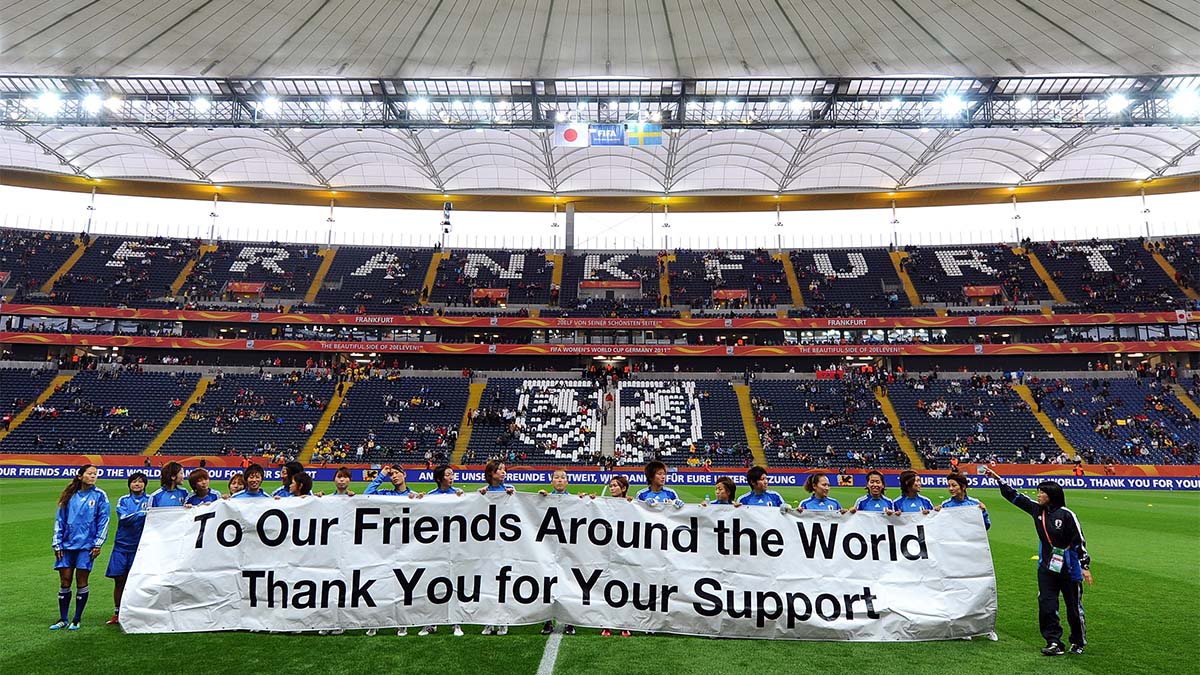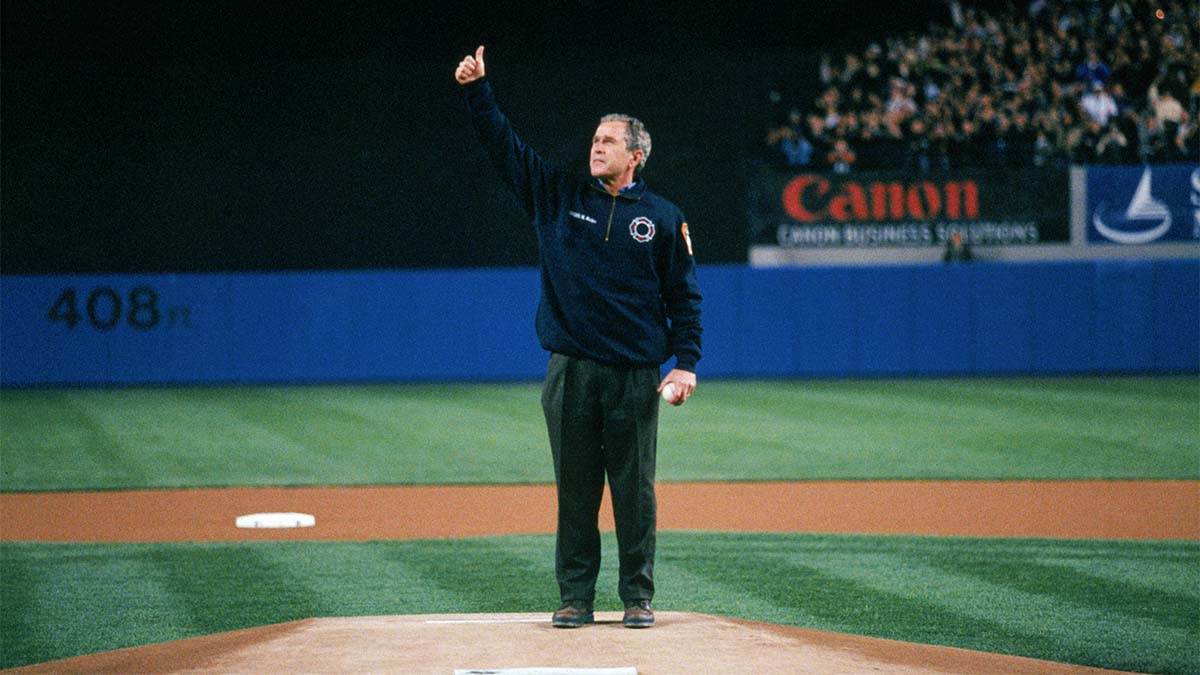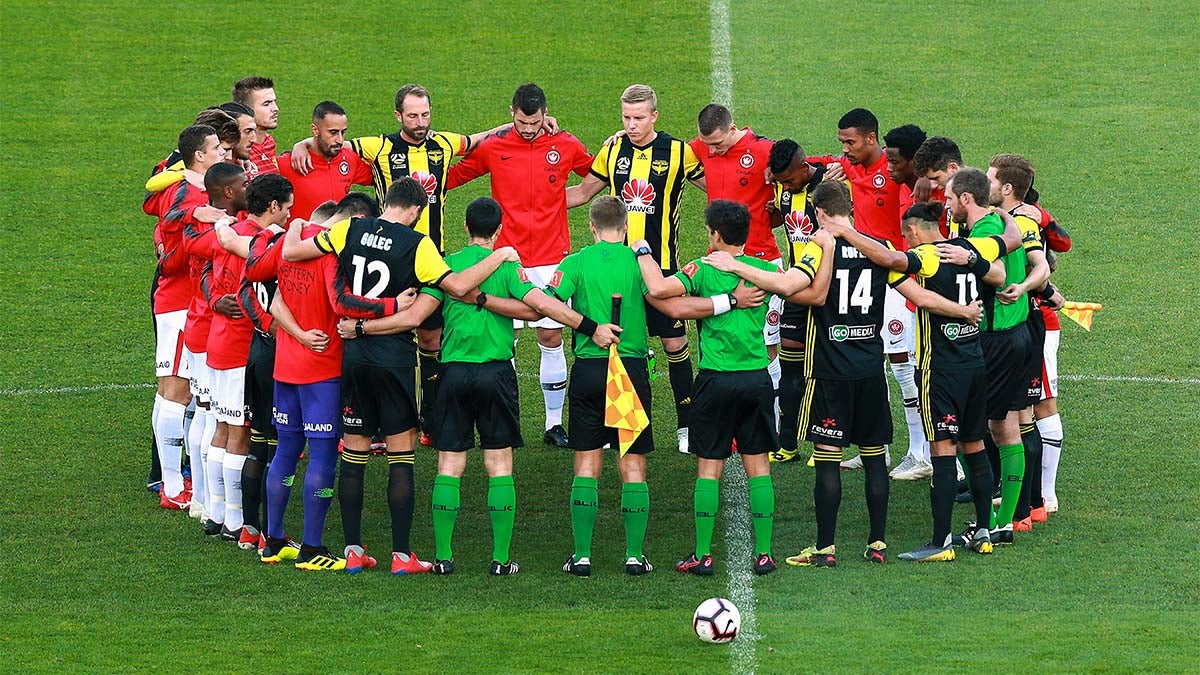Sports world offers comfort, healing after tragedy

In the days that followed the March 15 mosque terror attacks in Christchurch, New Zealand, feelings of unease, grief and confusion were felt all over the world, including the sports world. Individuals wondered how a man could walk into a place of worship and kill dozens of people. As people grieved, soccer players stepped on the field with heavy hearts two days later.

At Wellington Regional Stadium, the Wellington Phoenix and Western Sydney Wanderers joined in a pre-match huddle for a moment of silence to pay tribute to the victims.
In the moment, rivalry and competition did not matter. In the moment, fans came together, regardless of the team they rooted for.
And once the game commenced, Wellington striker Roy Krishna scored a goal but did not launch his usual postgoal celebration. Instead, Krishna, whose wife is a devout Muslim, dropped to his knees and went into a Muslim Sajdah prayer position as a tribute to the victims of the attack.
The short-lived gesture will live long in the hearts and minds of those affected by the attack. The gesture showed that even in a time of hurt and confusion sport can act as a blanket of comfort, relief and unity. The role has played out time and time again after disasters and tragedies.
According to the United Nations’ Inter-Agency Task Force on Sport and Development, sport is an effective voice to convey messages of peace on global and local levels. It also offers a sense of normalcy to environments that have been struck with chaos. This unity, comfort and stability can come in many forms.
According to a 2015 study by University of Memphis researchers who analyzed sport and disaster relief, sport plays a key role in community recovery efforts through donations, emotional support, spreading awareness and enabling psychological recovery.
A 2011 study by North Carolina State University researchers showed sport can be vital in community rebuilding efforts. The majority of the research was drawn from professional football’s role in helping New Orleans after Hurricane Katrina.
Hurricane Katrina
When Katrina struck in 2005, it not only wiped away infrastructure, but it also decimated the hope and spirit of the people of New Orleans. The storm took the lives of 1,833 people, according to CNN. With nowhere to go, many residents who couldn’t evacuate went to the Superdome, the home of the New Orleans Saints.
The damages the Superdome sustained during the storm and its aftermath forced the Saints to relocate their games to the Alamodome in San Antonio, Tiger Stadium in Detroit and Giants Stadium in New Jersey for the season. The Saints won three games.
The team and the people of New Orleans needed something to rally around as recovery efforts lagged and the realization the city would never be the same settled in. That change came in 2006 with new head coach Sean Payton and a new quarterback, Drew Brees.
As the 2006 season began, the Saints returned home to a repaired and refurbished stadium. And, the Saints came marching in. In the first game back in the Superdome, the Saints beat the Atlanta Falcons 14-3. The team carried that energy through the rest of the season, finishing 10-6 in the regular season and reaching the first NFC Championship game in team history.
The team’s success gave the people of New Orleans something to be proud of. It sent a hopeful message to the residents that if the Saints could rebuild and find success after adversity, then they could as well.
The Saints’ success sparked additional life in New Orleans. According to CNBC, restaurants and local businesses benefited tremendously from the revenue the Saints’ successful season provided.
“The Saints became a rallying point for the area,” CNBC contributor Carol Roth said.
As it had for the city of New Orleans, sport played the same role a few years later in Japan.
2011 Japan earthquake and tsunami

On the afternoon of March 11, a magnitude 9.0 earthquake struck Japan. The earthquake triggered a tsunami less than an hour later. The tsunami waves reached heights of 128 feet, according to Live Science. The earthquake and tsunami killed more than 18,000 people, caused $235 billion dollars in damages and created a nuclear disaster.
According to the New York Times, athletes and coaches created a support network to help hundreds of athletes that were affected by the tsunami. Sports also helped reconnect athletes with their families and neighbors.
To help the victims of the natural disasters, Japanese baseball and football teams staged charity events, according to the Independent. Japanese soccer star Mitsuo Ogasawara arranged clothing from local soccer clubs to be delivered to affected areas.
With help, Ogasawara also arranged children’s soccer clinics for local youth across the affected area.
And, in another effort to live up to the name “the reconstruction Olympics,” youth from Fukushima, Iwate and Miyagi are invited to the 2020 Olympic Games scheduled to take place in Japan, according to Inside the Games. Fukushima was the community at the heart of the nuclear disaster, and Iwate and Miyagi were significantly affected the most during the tsunami.
Yuzuru Hanyu, a two-time Olympic figure-skating champion, was training in his hometown of Sendai when the tsunami struck. Sendai was one of the worst-hit cities.
After the earthquake and tsunami, Hanyu teamed with other skaters to stage a benefit show to raise recovery money for the victims.
Three years later at the 2014 Sochi Winter Olympics, Hanyu won gold in men’s singles skating. In 2018, he defended his title at the PyeongChang Games.
An emotional Hanyu dedicated his performance to the victims of the tsunami, according to Yahoo Sports.
"After the tsunami and the earthquake, a lot of people helped me out, and I don't think I was here spiritually by myself. I am here because of all the people in Japan who supported me.”
Parkland, Fla., shooting
The sporting world was also present to comfort Marjory Stoneman Douglas High School after a gunman opened fire and killed 17 students at the Florida high school. After the 2018 shooting, many athletes and teams aided students who survived and honored those who didn’t.
The U.S. women's soccer national team honored Alyssa Alhadeff, who was on the high school’s soccer team. The team contacted Alhadeff’s family and teammates. Alex Morgan, hosted the school’s soccer team and Alhadeff’s family at an Orlando Pride game.
Joaquin Oliver, a big fan of NBA star Dwyane Wade, lost his life in the shooting. According to Forbes, Oliver loved Wade so much he was buried in a Dwyane Wade replica jersey. When Wade heard about this, he invited the family to a Miami Heat game and reached out to other families and students of the school. He visited the school and talked about gun violence.
Inspired by the students’ resilience and cause, Wade used his platform to give the students a voice about gun violence. Forbes reported Wade sponsored the “Parkland 17” art exhibit at the Wynwood Art Walk. The walk provided a phone booth to call representatives about gun control. Wade and Gabrielle Union also donated $200,000 to the “March for Our Lives” campaign that was led by the students.
The Florida Panthers wore “MSD” patches on their jerseys for the rest of the 2018 season after the shooting to honor the high school. According to CNN, Corey Liuget visited the school and funded a scholarship program. The NFL defensive tackle for the Chargers and Miami native created the fund to honor football coach Aaron Feis. Feis was killed shielding students from gunfire.
And, if anybody needed a surer sign that sports can offer support and unity in a time of grief, it would be in Game 3 of the 2001 World Series in New York.
Sept. 11, 2001

At a time when New York was uneasy and scared, the New York Yankees and the Arizona Diamondbacks played Game 3 of the 2001 World Series in New York. It was the first World Series game in New York since the September 11 terror attacks, and the city was on high alert.
President George W. Bush was advised to throw out the first pitch for Game 1 because it was in Arizona, where there was less of a threat there compared to New York. But the president wanted to throw the first pitch in Game 3. He wanted New York.
So, on the night of Oct. 30, 2001 President Bush and 55,000 fans made their way to Yankee Stadium.
“Please turn your attention to the mound and welcome the President of the United States, George W. Bush,” announcer Bob Sheppard said.
President Bush walked on the field without his bullet proof vest, waving and giving a thumbs up to fans; the same fans who were scared, and sense of security crumbled with the Twin Towers.
Bush threw a perfect strike, something he was nervous about, according to a report in Grantland. And, after the pitch he gave another thumbs up to the crowd.
Bush’s Game 3 first pitch went down as a moment in history where baseball rallied the country in a moment of fear and grief. It gave them citizens hope and courage in the wake of a shattering event.
Whether it’s financial aid, spreading awareness or a ceremonial first pitch, the world of sports is here to lend a helping hand when disaster strikes.
Katelyn Oates is a sophomore journalism major at Arizona State University


